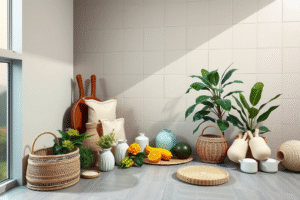Living a sustainable and waste-free lifestyle has become increasingly popular over the past few years as people become more conscious of the impact their actions have on the environment. Reducing waste and living a more responsible life can help conserve resources, protect the environment and lead to a healthier and more peaceful life. Transitioning to a sustainable waste-free lifestyle can seem daunting at first, but with a few simple tips and tricks, it can become an achievable reality.
Why Transition To A Sustainable Waste-Free Lifestyle?
Transitioning to a sustainable waste-free lifestyle comes with many advantages. Reducing waste and living a more responsible life can help conserve natural resources, protect the environment, reduce landfills and pollution, save energy, and create a more sustainable world for future generations. Transitioning to a sustainable lifestyle can also lead to health benefits, as it generally involves eating fresh and natural food, reducing exposure to harmful chemicals and pollutants, and engaging in physical activities such as walking and biking. Additionally, living in a more environmentally conscious way can help reduce expenses in the long-run.
Reduce, Reuse, Recycle
When transitioning to a sustainable waste-free lifestyle, it is important to follow the “three Rs”:Reduce, Reuse, Recycle. The first step is to reduce the amount of waste you produce either by minimizing the number of things you buy, reusing items as much as possible, or choosing products with minimal packaging. The next step is to repurpose and reuse items in creative ways instead of throwing them away. Finally, it is important to make an effort to recycle as many of the items you have used as possible. By following the three R’s, you can make a significant difference in reducing waste and living more sustainably.
Eat A Sustainable Diet
The food we consume can also have a significant impact on the environment. Eating a sustainable diet involves choosing locally grown produce and sustainably sourced fish and meat. By choosing to eat a diet that is lower in carbon-producing foods, you can help reduce the environmental impact of agriculture, and enjoy a healthier and tastier meal.
Invest In Reusable Products
Investing in reusable products is a great way to reduce waste and live more sustainably. By opting for products like stainless steel water bottles, reusable bags, and silicone food storage containers, you can reduce the amount of single-use items you consume. Additionally, investing in reusable items can often save money in the long-run as they are typically more durable and long-lasting than their single-use counterparts.
Embrace Zero Waste Living
Once you have mastered the basics of reducing waste and eating a sustainable diet, you can take your efforts to the next level by embracing zero-waste living. Zero-waste living is an approach that aims to reduce the amount of waste produced to as close to zero as possible, by swapping out disposable items for reusable ones, composting food waste, using bulk bins for food shopping, and making homemade products. Embracing zero-waste living can be both rewarding and challenging at first, but with practice it can become a way of life.
Look for Eco-Labelled Products
When looking for replacement products look for eco-labeled products, which are made from sustainable resources and are manufactured in an environmentally responsible way. Many companies now produce a
variety of household items, clothing, and personal care products that have been awards the eco-label, making it easier to make more sustainable choices in everyday life.
Get Involved In The Zero-Waste Community
The zero-waste community is a great resource for tips, ideas, and support for those looking to make the change to a more sustainable waste-free lifestyle. Look for local zero-waste groups, online forums, or even start a zero-waste group in your community. By talking with and learning from others, you can gain new ideas and inspiration for living waste-free.
Take Time and Be Patient
Finally, when transitioning to a sustainable waste-free lifestyle, it is important to remember to take time and be patience. Making the switch to a more sustainable way of living takes time and can be overwhelming at first. Set small, achievable goals and take small steps to work your way towards a more sustainable lifestyle.
Conclusion
Transitioning to a sustainable waste-free lifestyle can seem like a daunting task at first, but with the right tips and tricks, it can become an achievable reality. By reducing the amount of waste we produce, eating a sustainable diet, investing in reusable products, embracing zero-waste living, looking for eco-labeled products, getting involved in the zero-waste community, and taking time and being patience, it is possible to lead a more sustainable and impactful life. So take the first steps today and start working towards a more sustainable waste-free lifestyle!





